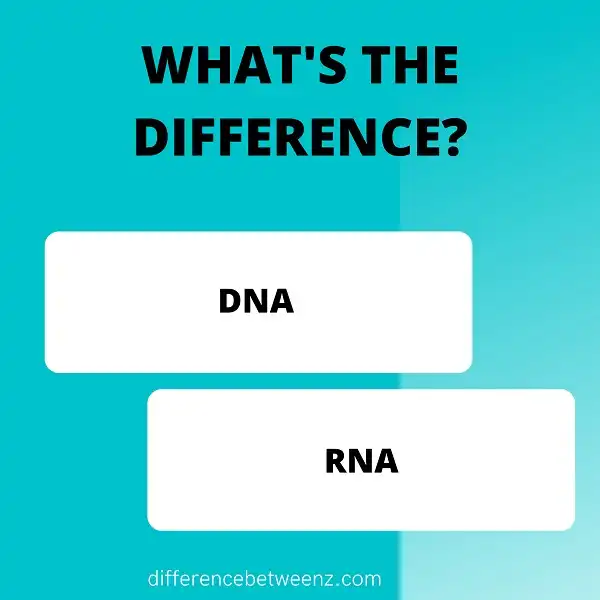DNA Vs. RNA
What is the difference between DNA and RNA? DNA, RNA, and proteins are the three major components that play an important role in living organisms.
The concept of DNA is widely known and as almost everyone knows, it has to do with storing genetic data that can be determinant in the behavior and traits that stand out in humans and other organisms.
However, DNA does not work alone; since RNA and proteins also play their role in determining the work of cells.
Difference Between DNA And RNA
RNA and DNA have some similarities, but also their differences. Next, we will see what the differences between DNA and RNA are.
DNA
DNA is the abbreviation for deoxyribonucleic acid. This is largely responsible for how people are viewed physically ( phenotype ) and how they act, as well as certain health conditions and traits that distinguish them.
It is also responsible for storing genetic information about how and what work each cell should do.
It’s a molecule that encodes the genetic instructions that are used for the development and functioning of cells in living organisms and many viruses.
E l DNA is one macromolecule essential for the existence of all living organisms.
The genetic information is encoded as a sequence of nucleotides: guanine, adenine, thymine, and cytosine.
DNA tells each cell what proteins have to do and also is responsible for storing long-term data.
The type of protein in a cell is what determines the function of the same. The DNA is inherited from parents to children, so they share similar traits.
The DNA molecule has a form double helix, which resembles a staircase that is twisted into a spiral. Each rung of the ladder has a pair of nucleotides that stores the information.
The DNA backbone consists of a sugar ( deoxyribose) and a phosphate group, from which the DNA gets its name.
The nucleotides are bound to the sugar in a special formation. The adenine (A ), thymine (T ), cytosine ( C), and guanine ( G) are nucleotides that always form pairs AT and GC; although they can be found in any order in the DNA.
The adenine and thymine pair to make two hydrogen bonds, while cytosine and guanine make three Hydrogen bonds.
When the order is different it is as if the DNA writes “codes” with “letters” that tell a cell’s duties to perform.
RNA
The ribonucleic acid ( RNA) molecule is a single chain that plays a vital role in the encoding, decoding, regulation, and expression of genes.
S to DNA is composed of the same nucleotides, but these are found in shorter chains.
The RNA is a molecule of single-stranded. Each nucleotide is composed of sugar ribose with carbons numbered 1 through 5.
The carbon atoms are composed of four bases different: Adenine ( A), guanine (G ), cytosine ( C), and uracil (U ).
The RNA backbone is composed of ribose sugar bound with a phosphate group and bases.
The bases are always formed as follows: GC and AU; although they can be found in any order.
Unlike DNA, the RNA is outside the nucleus of the cells and is not protected inside.
There are several types of RNA: transfer RNA ( tRNA ), messenger RNA (mRNA ), ribosomal RNA ( rRNA ) … All of these perform different functions in the body.
The RNA polymerase is responsible for decoding the genetic data of l DNA that the mRNA used then to direct how proteins act in the body.
The tRNA is responsible for the delivery of amino acids to the ribosomes, where the rRNA binds the amino acids to create specific proteins.
Therefore, the proteins are composed of a combination of different amino acids.
Thus RNA plays an important role in the decoding and transmission of the genetic composition found in DNA and is then used to create the proteins needed by our body.
Key differences between DNA and RNA
- DNA and RNA differ in structure and function.
- RNA has a single stranded structure , whereas DNA is formed by long strands of nucleotides. E l RNA consists of short chains of nucleotides.
- The DNA backbone consists of deoxyribose sugar , while the RNA contains the ribose sugar .
- In DNA, the complement to adenine ( A) is thymine (T ) ; while in the RNA it is uracil (U).
- DNA is responsible for storing the genetic composition , while RNA is responsible for transmitting said composition and helping to create proteins.


